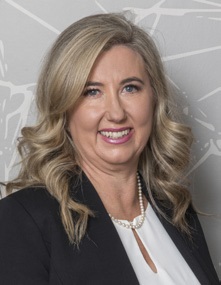We have all been interacting in new virtual ways, and most of our time is spent helping clients navigate the financial and emotional impact of volatile markets and long-term planning. I have spent a significant portion of my lockdown time running webinars for financial planners; teaching the skills of life planning, coaching and empathy.
We need to show up differently with our clients, and I believe that incorporating life planning, combined with coaching and the skill set of empathy, is financial planning done properly. It’s also heartening to see that FP Canada has revamped their entire curriculum to focus on the human element of financial planning.
Financial planners simply have to revise their value proposition to remain relevant. We need to connect with our clients as humans, and empathy lies at the core of this connection.
Pioneering in the field of vulnerability and empathy is Dr Brené Brown. She has spent 20 years studying courage, vulnerability, shame and empathy and recently completed a seven-year study on brave leadership.
Financial planners simply have to revise their value proposition to remain relevant
Before attending her Dare to Lead programme, I believed that I knew what empathy was. But the training made me realise that there were many parts to empathy that I needed to unlearn.
Unlearning old behaviour
The first step to unlearning old behaviour is to stop giving advice in the initial client meeting. Be curious instead. It is not our role to dominate the conversation and immediately share solutions to fix client problems.
The first meeting
The real value of the first meeting is truly connecting with the client – creating a space of non-judgement and emotional bonding; a space where clients feel listened to and understood. A quick check is to think about how you feel when sharing something deeply private with someone else. Would you like them to:
- Make eye contact
- Look away so you don’t feel self-conscious
- Reach out to hug you
- Give you space
- Respond right away
- Listen intently and hold the space with you?
Empathy holds a huge amount of power and communicates “that incredible healing message of, ‘You’re not alone’” – Brené Brown.
Connection misses
Although the definition of empathy is clear, it is still easy to fumble our responses while trying to interact meaningfully with clients. Let me share some stumbling blocks to keep in mind.
Mistaking sympathy for empathy is a common error. Sympathetic responses include statements like, “I feel sorry for you”; “You poor thing”; or sentences starting with, “At least…” These types of responses leave clients feeling shame and regretful for having shared personal and vulnerable information.
Don’t confuse connection with the opportunity to “one-up” your client, for example by saying something like, “Listen to what happened to me.” Your seemingly worse story does not cultivate connection, but rather makes the client feel undermined and insignificant.
Instead, use your listening skills to encourage empathy.
Connecting to the emotions that underpin the experience
Empathy is to understand what someone else is experiencing from their perspective – seeing the world through their eyes. It’s about understanding where your client is coming from, how they got to where they are today, what their unique challenges and experiences have been up to now, and how it’s affected them emotionally and financially.
You don’t have to have physically experienced the emotion; the important part is to spend time listening and understanding the emotions as best you can.
Explore your own emotions
It is challenging to understand a client’s emotion if you are not able to understand your own. Most of us are short on emotional literacy and we have been taught to bury our emotions, or that showing emotion is a sign of weakness.
We generally only show surface emotions to the world – the part that we’re comfortable sharing and allow ourselves to feel
We generally only show surface emotions to the world – the part that we’re comfortable sharing and allow ourselves to feel. The root cause of our actual emotions are often hidden, and it represents the full version of how we’re feeling. Research tells us that we are capable of feeling more than 40 emotions. We just don’t have the sensitivity to identify the full range of them any more.
It is helpful to start identifying your own emotions as a prelude to connecting with client emotions. A good read on this topic is Permission to Feel by Dr Marc Brackett – the book encourages readers to stop being ashamed of their feelings and provides helpful tips on how to upskill emotionally.
Cultivate new skills

I encourage planners to practise their listening skills. Advice can only be effective if it speaks to the client; if the client buys into the plan and if the client feels understood, respected and valued. Practise hearing your client and listen with empathy in mind.
A helpful tip is to communicate back to the client what you heard them say in your own words. Communicate your understanding of the emotion, without judgement and solutions – the result is true connection.
The new virtual way of connecting has placed a huge emphasis on empathy. If you’re meeting with clients online, remember to make eye contact, ensure that you’re in a safe, quiet space and that you’re not distracted by email or phone alerts.
If you are serious about truly connecting with your clients, you have to be fully present, curious and listen with intent.












